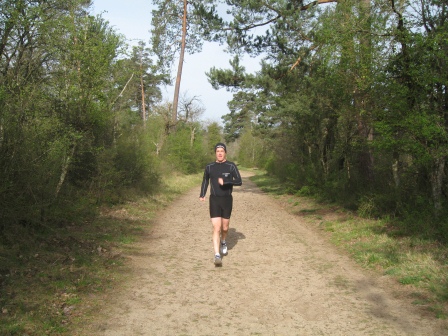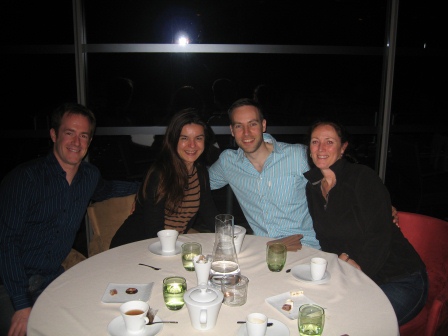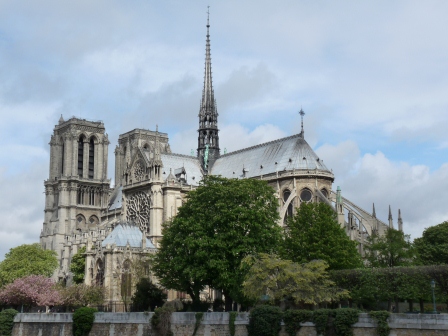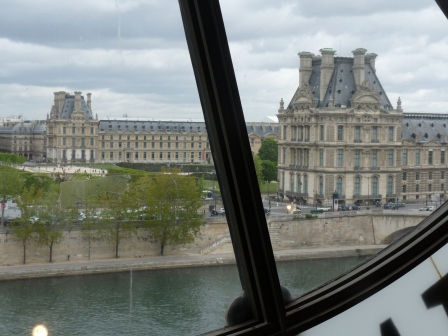The prospect of writing about Paris is a bit daunting for me. How to do justice to the “La Ville-Lumière“ (The City of Light)? “La Ville d l’Amour” (The City of Love)? How do I say something fresh about what is perhaps the most sought-after tourist destination in the most visited country on the planet?

I can say that ever since I’ve known my wife Diane, she has wanted to visit Paris. No specific reasons that I know of, just a strong, inexplicable attraction to a place she’s never been. I’ve been telling people for months that if we visit France again and don’t make it to Paris, I might be coming home alone. And so it was that we decided to head directly for Paris, to avoid any potential marital discord. Actually, we drove right past Paris to the town of Fontainebleau, about 55 kilometers south-east of Paris, which is the home of our friend Bart, whom we first met with his friend Evelyn in southern Tanzania in 2009 and traveled with together through Malawi and again in Zambia.
Fontainebleau is a beautiful and historic city. It is completely surrounded by a large and scenic forest, the former royal hunting park of France’s kings. It is also the location of the Chateau de Fontainebleau, a large palace where the kings of France and Napoleon used to hang out.
The chateau was originally a hunting lodge but was expanded into a true palace around 1500 CE by Francois I. For 300 years, French Kings continued to expand the Chateau to its current 1500+ rooms, with 130 acres of courtyards and beautiful gardens. Napoleon Bonaparte kept the ailing Pope Pius VII prisoner here for 18 months from June 1812 until July 1814, and it was from here that Napoleon departed for his exile to the island of Elba after giving a moving speech to his troops from the steps in what is now known as the “Courtyard of Goodbyes”.
Fontainebleau is also the world’s most developed and famous bouldering site. The forest surrounding the city is scattered with boulders that are scaled by climbers from around the world. It rained on and off the whole time we were there, so it was always too wet for bouldering, but we did go for a run in the forest on the day of our departure.

Fontainebleau became our base for 6 days. We parked the S&M Motel on the street in front of a school just steps from Bart’s apartment (it was a school holiday week so the space was unused). We spent the first two nights at Bart’s place (he generously gave up his large bed for us) and when his girlfriend Isabel arrived, we just stayed in the camper. We shared several meals with Bart and Isabel, including one night at the very fancy French restaurant at the local equestrian center (a far cry from the Keg in the Country restaurant where I worked in the early 1980’s!)

We spent 3 days in Paris. Each day we took the train from Fontainebleau (about 45 minutes) into Paris’s Gare de Lyon station and from there we walked or used the efficient Metro (subway) to get around Paris. We managed to see many of Paris’ famous sites:
- Cathédrale de Notre Dame de Paris – the 12th century cathedral located on Île de la Cité, an island in the Seine river, and home of the famous hunchback in Victor Hugo’s novel

- Ste-Chapelle – a gothic chapel located inside the Palais de Justice (Law Courts) that was built to hold the holy relics of Louis IX, but is now visited for its amazing stained glass
- The Eiffel Tower – more about this in an upcoming post
- Le Champs Élysées – a promenade connecting L’Arc de Triomphe (a Roman arch built to celebrate Napolean’s victories) to Place de la Concorde (site of the infamous guillotine during the French Revolution, but which now contains a 3300 year old granite obelisk that once stood in the Temple of Ramses in Luxor)
- Musée du Louvre – the massive art museum that is home to the Venus de Milo and the Mona Lisa

- Musée d’Orsay – in a beautiful converted train station, it houses France’s national collection of art from the 1840’s to 1914, including the Impressionists. We preferred this museum to the Louvre.

- Montmartre – a butte overlooking Paris and the Moulin Rouge, home to the Basilique du Sacré-Coeur and the bohemian artists of the turn of the 20th century like Toulouse Lautrec
- Hotel des Invalides – built in the 1670’s as a home for disabled veterans, it is now a park containing the army museum and 2 churches where many French soldiers are buried, including Napoleon.
- Musée Rodin – a museum of Rodin’s sculptures with a lovely garden where we had a picnic lunch before viewing The Thinker

- La Rive Gauche – another famous promenade along the ‘left bank’ (the south side of the Seine), which passes Pont Neuf (a bridge from Île de la Cité to both banks of the Seine)

- Chateau de Versailles – France’s grandest royal residence, built by Louis XIV (‘The Sun King’) and located 21 kilometers outside Paris in the suburb or Versailles
Paris is a great city for walking. Despite the on-and-off rain, we enjoyed wandering around looking at the many places we’d only read about or seen in movies. Of course, we only scratched the surface of Paris. There are many more neighbourhoods, museums, and galleries to explore should we return.
But now I can rest easy knowing that Diane has seen her great white whale.

Sounds wonderful. Only thing missing was any mention of a glass of red wine in the “City of Love”. Although knowing Diane, I’m sure she enjoyed a couple of glasses.
Hi Annette — You’re just too quick. Must be all that Ironman training! Take a look at the next post: http://dreambigliveboldly.wordpress.com/2012/04/30/my-birthday-in-paris-guest-post/